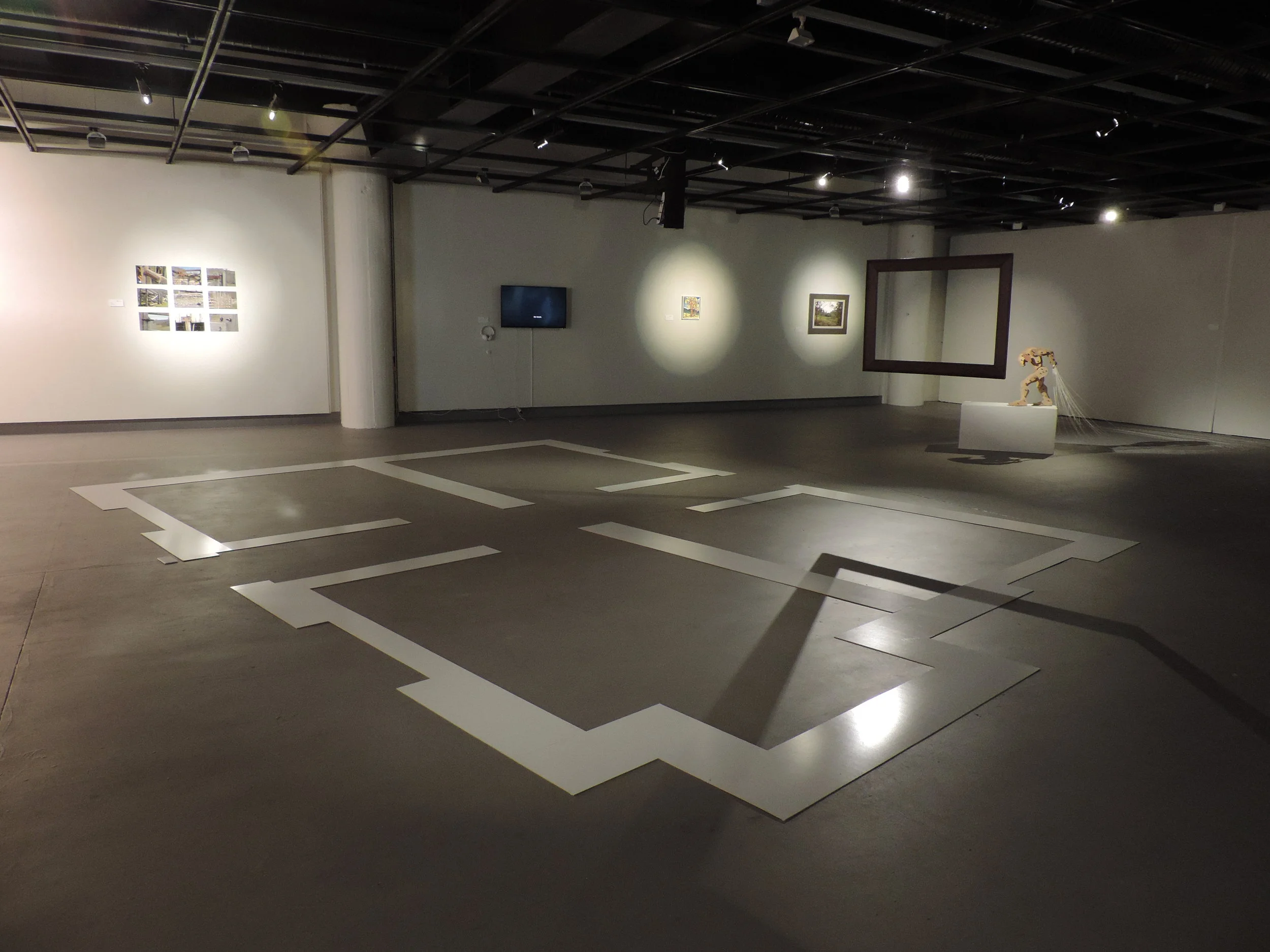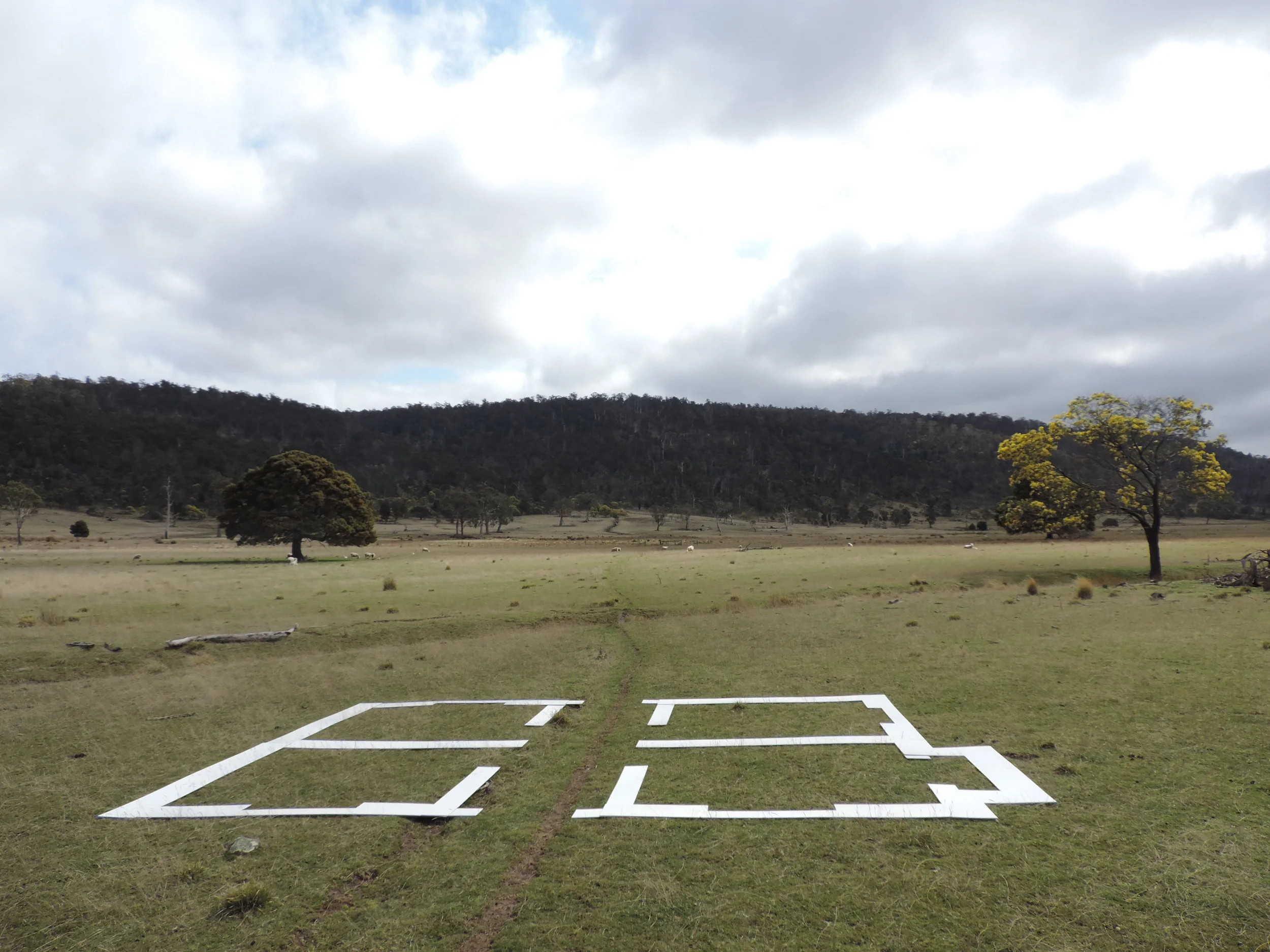Within Whose Steps? (2017)
TITLE: Within whose footsteps?
DIMENSIONS: 4.8m x 6.8m x 2m
MATERIALS: MDF, vintage picture frame
I find it impossible to look upon the landscape that is Marathon and not think of colonial settlement era artist John Glover, whose depictions of the surrounding region stand as visual reference for the most pivotal point in Tasmania’s history. Glover’s skill has left many of his scenes still recognisable today. Familiar vignettes appear to me regularly when I raise my eyes to the broader landscape surrounding Marathon, albeit with intrusions of ‘civilisation’.
If the timeframe of The Marathon Project had been short my investigation would have probably gone no further than to acknowledge the battle between man and nature constantly played out on rural properties. However, the gift of The Marathon Project has been its length. Not only have the participants been able to observe, over several seasons, the unpredictable extremes and effects of weather that farmers know intimately, but we have also had the luxury of time to follow numerous veins of interest. Time has allowed a much deeper story to surface.
I have come to realise that by the time Glover arrived at his home, Patterdale (northern neighbour to Marathon), the actions of his southern neighbour John Batman, and others, had impacted so heavily upon the population of First Tasmanians that the few who Glover saw in person were no longer living the traditional, idyllic existence in which he depicted them. It would seem, however, that Glover felt a responsibility to send a message to his viewer that these particular images depicted a landscape that had been irreparably altered (which he achieved largely through a distinctly different stylization of the trees).
Glover’s paintings of First Tasmanians were not a description of what he saw with his own eyes: they were a comment on what had changed and what was now absent.
I feel a weight of responsibility in re-recording this place, powerless to determine whether any trace of my art will survive to serve as an historical record, as Glover’s has. If it does, my responsibility is to have recorded my observations thoughtfully through the lens of my time.
The eastern planes of Marathon form part of a natural corridor thought to have been traversed by First Tasmanians prior to colonial invasion. Surrounded by Gloveresque vistas, today these grazing paddocks bear the marks of sheep tracks and fences and, as the land rises towards the conservation reserve, a scar regretfully left upon the landscape by a young Andrew Cameron, the current custodian. Within this space I placed an intervention: the footprint of a small, early 1800’s cottage, referencing the one whose remnants remain between the Nile River boundary and the Marathon shearing shed. Transposed into the gallery the cottage footprint relies on the works around it for context, while an empty picture frame ‘hung’ upon its wall challenges the viewer to question pictorial representation as a mode of communication. Through this work I am seeking to use absence to prompt my viewer to construct their own image what has occurred here across time.


